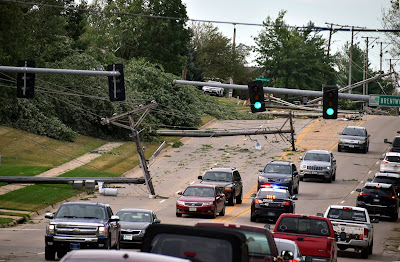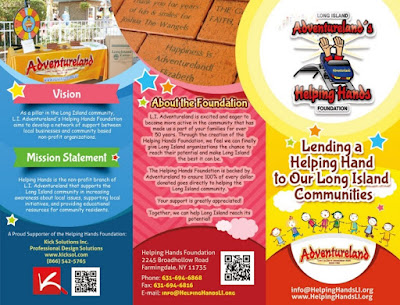Basics of News Releases
Read for Aug. 26, 2024. A news release is possibly the most basic of public relations documents. It is, in essence, a news story that is written to tell publics, primarily external publics, news about your organization that also serves the organization’s goals.
The release is traditionally an attempt to gain publicity—public attention via the media—for your client or group you work for. The original goal of news releases was to produce a document that would induce media to write about your organization, preferably in a favorable light.
That still is an important goal for news releases. Thus, creating a news release requires enough basic media and journalistic skills to write a news story—because one of your goals is to have all or part of the release become media content.
However, because every company or organization these days is accessible on the internet and also posts information on social media (Facebook, Twitter, Instagram, etc.), you also have to keep in mind that today, a news release is usually accessible to anybody who is interested enough to look for it. It also may be an artifact that gets linked to via blogs, tweets, etc.
A news release thus must be useful to journalists who may use its contents in a story, but it also speaks directly to a broad range of other members of the external publics.
To understand news releases, you want some sense of what news is, how to write news in a media voice and how to create a release that appeals to journalists, since they will decide whether to use your information. In addition, you should understand the kinds of news releases that are common. Finally, you should be able to format your information correctly—to know the parts of, and be able to create the parts of, a news release.
Those will be the main topics of our discussion this week.
In terms of format, you PR Style Guide (chapter 11) provides a decent guide. Make sure you read over that chapter and look at its examples.
What is news? That’s a complicated question that is a key to news release writing. Understanding news is a process of taking a general set of facts and recognizing what’s most important in those facts, and arranging the information in an informative, clear way.
Your next will note news criteria, which is also studied in journalism courses. The basic news criteria or elements of news are:
Timeliness—This is a key to news release writing. Don’t be coy with time—information is only news if it relevant now—something is about to happen or something just happened. Remember the “new” in news.
 |
| C Avenue in north Cedar Rapids, Aug. 10 2020--4-lane street squeezed by downed power poles after 140-mile winds of a derecho storm. Image by Joe Sheller. |
Proximity—A fancy work for “location.” The derecho storm that hit the region Aug. 10, 2020 was news here—both at Mount Mercy and the state—because it hit here. We are where the action was and is for the storm and its aftermath. On the other hand, the COVID-19 pandemic has worldwide proximity—but aspects of it have more local proximity, too, because Iowa is in the country with the worst impact from the pandemic, and we are in a state and region that are “red” zones for that pandemic. Location is both literal and symbolic, however. It refers not just to something being literally “close,” but also something happening in a place that people in your public cares about. The capital of Belize is closer to Cedar Rapids than London, England, is—but London has way more “proximity” because of the city’s cultural importance as a place many of us in Iowa have been to or have other cultural connections to. Always remember that there are two ideas of proximity—literal location, and locations that the public you are targeting cares about or has ties to.
Impact—also known as significance or consequence. The 2020 derecho certainly had that here, at MMU, in Cedar Rapids and in Iowa in general. Events that cause people to have to alter what they do, how they work, what the “rules” are have high impact. Impact means that something changes the daily routine or lives of your public in a meaningful way.
Novelty—The corona virus that causes COVID-19 was called a “novel” virus in 2020 because before then, zero humans had any contact with the virus (well, a few may have in 2019, in general it started to spread in 2020). The virus was new—thus, novel. Novelty means something is unusual, the first of its kind, something that has not been seen before. The term “derecho” was coined in the 19th century, so this kind of storm is not completely novel, but before 2020 had not struck Iowa in a consequential way in the past century. For us in 2020, this was something new that has not happened before (and, we hope, does not happen often again, although we experienced a smaller derecho in 2022).
Human Interest—Narratives about other humans can be poignant—they can tug at the heartstrings. A journalist who is writing about a disease will always try to find a person dealing with that condition, because having a character makes for a much better story. We want not just the facts, but to understand what those facts mean in lives. If you can report a story in a news release that makes a reader cry or laugh, you’re appealing to their human interest. In rhetoric, we refer to “pathos,” or an appeal to emotions—and human interest is a related idea in news writing. So, no, “human interest” does not mean humans are interested in it—they should be interested in all news—but that the basis of that interest is something that tugs at the heart.
Conflict—Black Lives Matter is a controversial social and political movement. It taps into a deep reservoir of ongoing history in this country, and many in the BLM movement promote ideas that can cause disagreement. Thus, a story about BLM is on a topic that people disagree on. Our politics has become extreme and divisive in recent years, and any story about the election of 2024 likely can spark strong, differing opinions. Any controversy that touches on public policy about which there are strong disagreements is high in conflict. Conflict can be literal—crime and violence have conflict—but mostly it’s political or social differences of opinion on big, relevant questions of policy.
Prominence—Again, like “human interest,” this doesn’t mean just what the word literally means. Prominence can be thought of as the “who” category. If a story touches on a person or personality that is familiar to members of your target public and that the public cares about, the story ranks higher in prominence. I mentioned Dr. Todd Olson in the first blog post as a person with high “ethos” because I think most people who know him think of him as an honest person who is working on behalf of Mount Mercy. Dr. Olson also has high local prominence—he is “known.” I’m also “known,” although I think realistically not as well known here as Dr. Olson. A brand-new professor who has not taught at MMU before will be less prominent than me—not less important in a larger, human sense, but simply not as known by MMU publics. This impact on news is huge—if I get “cool to be kind” tattooed on my forearm, nobody would care. If Joe Biden had the same words tattooed on his arm, there would be all kinds of news stories about it. One Joe is way more prominent—known to a wide diversity of publics—than the other Joe is.
Topic two is writing in a “media voice.” A news release has to embed favorable message about your organization in neutral language. This can be a very difficult balance for students. Marketing often uses hyperbole as a rhetorical tool, but news releases must avoid this kind of awkward overstatement.
That’s because a news release, if it is to be credible, has to seem objective and factual, not over-the-top and emotional. (It should have lots of emotion—human interest—in it, but should not be written in an emotional voice).
The language of media writing needs to be concise, accurate, factual and neutral. Write a news release as a news story is written. And learn to consume news so that a “news voice” is second nature to you. Not all PR writing is objective in the sense that a news release is—but you are writing news in an objective news voice when you write a release.
Besides being written in a compelling, authoritative and neutral style, a media voice means that you communicate clearly. The language should neither confuse nor confound your public. Be clear about what the facts are and write those facts in language that leaves no doubt about what you’re trying to state.
That is one key reason why I require you to write for The Mount Mercy Times. Remember that when you’re writing for the Times, you are doing journalism, not PR. But you’re are learning the same style of writing you need to apply to news release writing in PR. Also, MMU provides you with a free subscription online to the New York Times. Make it a habit to skim 1 or 2 NYT stories daily--the New York Times is the biggest of the big leagues in American journalism, and a good sample for you to read to learn to write in an authoritative media voice.
Finally, topic three, your news release must be written with clear knowledge of what the parts of a release are.
A traditional news release is a one- to two-page, double-spaced document printed on an organization letterhead. It starts with “contact” information—the name, title, phone number and email address of a person a journalist can contact. (Web-posted releases often truncate this part or put it at the end, and are usually not double spaced). The words “for immediate release” are also usually included in this area of a release—and indicates a journalist is free to use the information right away.
Then comes a headline. A headline is a short sentence that communicates the main newsworthy facts of a story. Be careful here—a tendency is to write clickbait headings, because it may be what you’re used to seeing online. A headline must be clear, compelling, neutral—and a sentence. It must have a noun and a verb.
Examples in your style guide will often have a subhead or second headline. This is not required on every release, but on a longer one makes sense. A second headline should not repeat the language or facts of the first headline, but can expand the main idea or point out a second, but still important, aspect of your story.
A dateline—the city where information was gathered and the date—is then the start of the lede, or first paragraph, of the release. (Some sources call this the “lead,” which is grammatically more correct, but in media writing, the term lede is common). A lede repeats the facts of the headline, but not in headline language and expands the idea with more detail. A lede should be short—less than 30 words—and is usually just one sentence.
Next comes a bridge paragraph, sometimes a direct quote. Introducing a person or source of information is common in this bridge. The next paragraphs report information in declining order of importance.
Paragraph length should vary, but media writing favors short paragraphs. If you’ve typed three sentences, look for an excuse to hit “enter.” And one rule of thumb to help with this is that any direct quotation of a sentence or more should be in its own paragraph.
The final paragraph of the news release often relates background information about the organization that is sending out the news release. This “standard” last paragraph is called the “boilerplate.”
Last, but not least, what kinds of news releases are there?
There are basically two flavors of news release. The most common is the “announcement.” An announcement means your organization is doing something that creates interesting news—in effect, you are announcing something cool about your place. The second kind of news release is a “reaction” release. Your organization has something important to say on some news that has happened, and maybe has something to announce in relationship to that, but you didn’t create that news, you’re instead reacting to external events.
Announcement news releases come in many forms:
Event announcements give information on something coming up that a public would be interested in. A university, for example, would announce a prominent speaker who is coming to campus because the public would be interested.
Product or service announcements give information about new products or services, or special application of existing products or services. Be careful with these—the product has to be genuinely newsworthy, and the news aspects of it are what the PR news release will report. A news release is not an ad nor marketing communication.
Personnel announcements cover hiring important new employees who have some prominence to publics, or the promotion of an existing employee to a new role that would be of interest to a public.
A “home-towner” is a special kind of announcement which is sometimes a smaller-scale personnel announcement. Releasing the names of MMU students who earned dean’s list honors to their community newspaper is a home-towner—someone from there (students from Waterloo, for example), make good here (MMU).
Reaction news releases include something that is also a kind of announcement—this release that straddles the line between reaction and announcement is called a “spot announcement.” It comes from the term “spot” news that names unexpected events. Thus, an Alliant Energy news release about restoring power after the derecho storm is an “announcement” because Alliant is talking about what it is doing, but is also a reaction to spot news—the storm—that is an external event to an external event Alliant did not create.
There is also the “bad news” news release, which is when an organization is reacting to negative news or events that threaten the organization in some way. Statements about damage to MMU are “bad news” news releases. These are very important—if your organization is involved in a negative even or itself hurts someone, you need to know how to respond. The honesty and credibility of the PR writer comes into sharp focus in these circumstances. Don’t avoid reporting the bad news—but be clear on what your organization is doing about it.
We’ll look at many sample news releases this semester. Here are two, one from PR Newswire and one from Businesswire, both national news release circulation companies. What makes these releases news? How do they meet the news writing ideas discussed above? What kind of news releases are these?
Finally, an example of a news release from Mount Mercy University. What news criteria can you apply to this news release?




Comments
Post a Comment